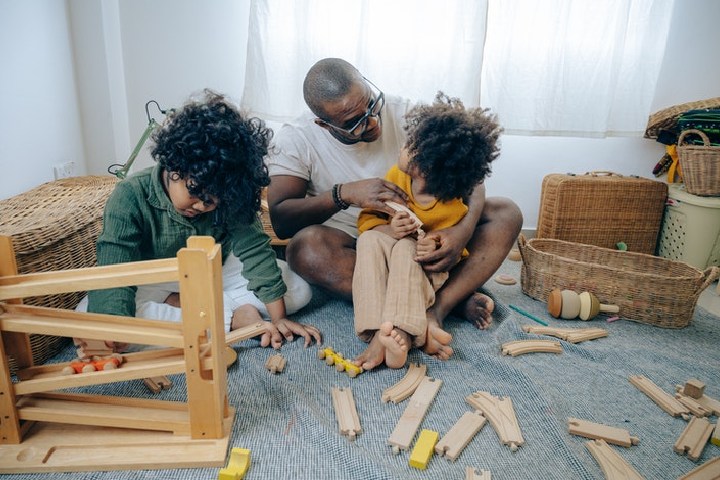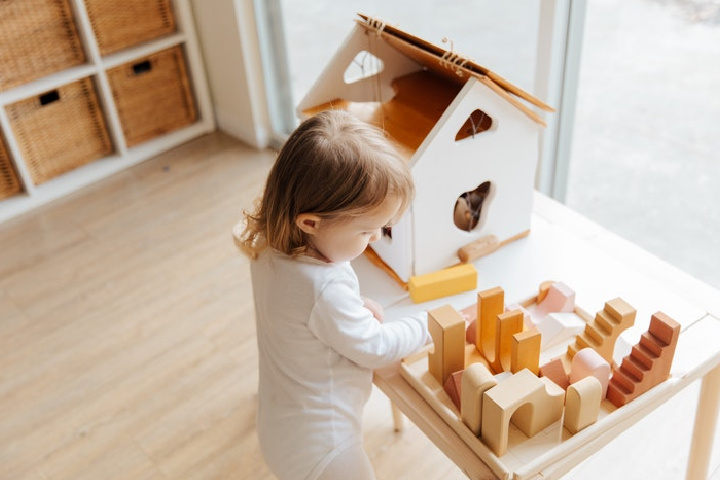Creativity: You will enjoy putting one piece on top of another and making a cabin or a ship. And above all, he will enjoy it knowing that you are close.
Often, our young children prefer to play where we are (or near) rather than in their room, alone.
And there will be days when we find it convenient to turn the room “upside-down” and other days when we ask them to play something calmer and less cumbersome to order. There are days for everything!
When children can manipulate objects and stack them on top of each other, one of their greatest pleasures will be building towers. The higher, the better, and above all, seeing and hearing them fall!
Table of Contents
1. Beyond Stacking
With this type of construction game, children test how objects are held, check the different shapes and qualities, and play with the concept of stability without knowing it.
Your curiosity to know and achieve your goal has no limits. But the prize is also double since they see their tower grow, but the noise when it falls is also a source of pleasure.
They play with the fear that sound produces in them, and they feel satisfied because they overcome and dominate it.
With these games, they experience the concept of stability without knowing it.
However, they are not only seduced by building towers, but in general, they enjoy playing with spaces and volumes.
2. The Game Expands Your Creativity
They like to get inside a box and disappear or turn the table into a car, a spaceship, a giant hat, or a makeshift bed, showing imagination and creativity.
But when they grow up, they use chairs, blankets, towels, tables, cushions and everything they can find to make a castle, a cabin, or an aeroplane, according to their imagination.

These games contribute to the development of their psychomotor skills and familiarize them with more complex spatial concepts such as:
- up and down
- in out
- front-back
- Long short
- big small
- or left-right for the older ones
Through trial and error, they seek solutions to the problems that arise and face challenges such as keeping the pieces in balance, holding an irregular piece, or tying two different ones. They also contribute to the development of their psychomotor skills.
These games allow them to know their environment and dominate the spaces they will later recreate their symbolic match. These learnings are undoubtedly well worth a bit of mess in the dining room.
3. Little Worlds That Grow
When talking about these games, three essential aspects should be highlighted:
Its exceptionality. Playing to build spaces with chairs, sheets, and cushions are of great value, especially since it is not done every day. Hence, in part, it’s magic.
The companions. Creating as a team enriches the game, providing more imagination and creativity, as well as promoting communication and reaching agreements.

Sometimes our son does not have a partner, but he will be delighted if mom or dad plays for a while
The collection. After building, there is no choice but to collect. Let’s do it together with patience and good humour.
In addition to building places and spaces, their imagination leads them to include dolls and accessories that enrich their symbolic games.
The add-ons that they include enrich their symbolic games.
Also, taking advantage of a family excursion to the forest can lead to new and unforgettable cabins.
4. The Materials for Creativity
It is exciting to have a box (or several) full of Kapla- type construction woods at home, but –essential– without instructions.
The instructions prevent each child from conquering new challenges based on their actual moment and lead to frustration and a lack of creative imagination.

